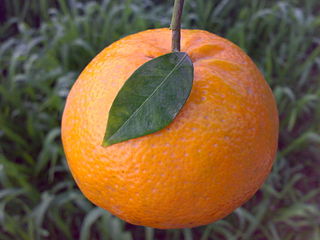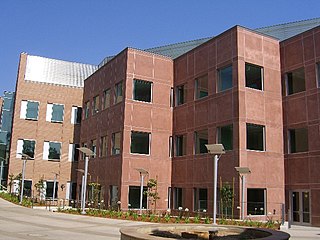The University of California Citrus Experiment Station
The Rubidoux Laboratory
The Southern California "citrus belt" developed rapidly in the 1870s after experimental navel orange plantings were conducted in Riverside, using cuttings introduced from Bahia, Brazil. Within two decades commercial orange groves stretched eastward from Pasadena to Redlands beneath the foothills of the San Gabriel and San Bernardino mountains. A citrus grower named John Henry Reed is credited with first proposing a state-funded scientific experiment station specifically for citrus research in Southern California, and organized a vigorous lobbying effort of the local citrus industry towards that end. As founding member and chair of the Riverside Horticultural Club's experimental committee, he also pioneered a collaborative approach to conducting experimental plantings, and published more than 150 semitechnical and popular papers on citrus and other subjects between 1895 and 1915. [1]
Riverside California State Assembly member Miguel Estudillo worked with Reed and a committee of the Riverside Chamber of Commerce to draft Assembly Bill 552, which provided for a pathological laboratory and branch experiment station in Southern California. On March 18, 1905, a legislative board of commissioners was appropriated $30,000 to select the site and implement the measure. On February 14, 1907, the University of California Regents established the UC Citrus Experiment Station (CES) on 23 acres (93,000 m2) of land on the east slope of Mount Rubidoux in Riverside. However, the University's decision to concentrate on the development of the University Farm in Davis led to only one scientist among two initial staff being assigned to the CES. Dubbed the Rubidoux Laboratory, the initial purpose of the station was to concentrate on various soil management problems such as fertilization, irrigation, and improvement of crops. [2]
Expansion and relocation to Box Springs
When you think about it, it's amazing the industry survived at all. Without the Citrus Experiment Station, it probably would not have been possible.
Lowell N. Lewis, former associate dean of UCR [3]
In 1913, a record killing freeze caused a panic throughout the $175 million Southern California citrus industry, which demanded more state-funded agricultural research. Three acts of the California Legislature in 1913 provided $185,000 to fund an enlarged Citrus Experiment Station to be located in one of the eight southern counties. Developers of the San Fernando Valley, recently opened for settlement by the 1914 completion of the Owens Valley aqueduct, lobbied intensively for the CES to be relocated there. Herbert John Webber, professor of plant breeding and the newly appointed CES director from Cornell University, considered various site proposals but ultimately worked with Riverside officials and local growers to assist in drafting and endorsing a proposal for the station to be relocated to its current site on 475 acres (1.92 km2) of land 2.5 miles (4.0 km) from downtown Riverside, adjacent to the Box Springs Mountains. On December 14, 1914, the UC Regents approved the selection, news of which caused jubilation in downtown Riverside: "The entire city turned into the streets, the steam whistle on the electrical plant blew for 15 minutes, and the Mission Inn bells were rung in celebration." It was, according to Reed as quoted in the Riverside Daily Press: "...the most important day that has occurred in all the history of Riverside." [4]
The new station was to be governed autonomously under Webber's direction. He spent the next few years personally recruiting the founding research team, eleven scientists organized into six divisions of agricultural chemistry, plant physiology, plant pathology, entomology, plant breeding, and orchard management. Webber also initiated the development of the Citrus Variety Collection on 5 acres (20,000 m2) planted with approximately 500 species of citrus from around the world, which grew to become the greatest such variety collection internationally. He also planted hundreds of other subtropical crops, including 70 varieties of avocado, imported from Mexico, that produced more than 45,000 hybrids through controlled pollination. (He also engaged in agricultural extension activities by founding the California Avocado Association in 1914, and by organizing the annual citrus institute of the National Orange Show in San Bernardino and the Date Growers Institute of Coachella Valley.)
The original laboratory, farm, and residence buildings on the Box Springs site were designed by Lester H. Hibbard of Los Angeles, a graduate of the University of California School of Architecture, in association with a colleague, H.B. Cody. Built at a cost of $165,000, the architecture followed the Mission style suggesting the Spanish colonial heritage of Southern California. The site, which became the early nucleus of the UCR campus, eventually opened in 1917, although the Division of Agricultural Chemistry continued to occupy lab space at the Rubidoux site. (The Rubidoux site is today occupied by the UC Center for Water Resources.)
Research achievements during the Webber Administration
Webber's tenure as director of the CES lasted, with a few interruptions, from 1913 until his retirement in 1929. A few important achievements of the CES during his directorship were: Walter P. Kelly's development of drainage techniques for reclaiming thousands of acres of California land made unproductive by salt accumulation; the development of chemical fertilizers; the discovery of boron poisoning, methods for its control, and an understanding of the necessity of minute amounts of boron in citrus growth. Howard B. Frost's pioneering genetic research lead to the first accurate reports of the normal number of chromosomes for some citrus, the first discovery of polyploidy in citrus, and the first descriptions of citrus tetraploids. Frost also developed tools for guiding artificial hybridization for production of new citrus cultivars, which resulted in widespread propagation of nuclear lines and contributed to the improvement of citrus plantings throughout the world. By working out the etiology of various types of diseases, particularly gummosis, Howard S. Faucet contributed significantly to improved methods for disease control and made possible the discovery of the viral nature of some diseases which were responsible for causing quick decline among 3 million orange trees over a 25-year period. H.J. Quale's entomological research on citrus insects, mites, and walnut insects led to the first recognition of the problem of insect resistance to fumigation, and of means of overcoming it. Harry H. Smith and Harold Compere's discovery of natural parasites of the citrophilus mealybug in Australia effected almost complete control of this parasite in California, which saved growers in Orange County almost $1 million in crop losses annually. Although its major emphasis was on citrus, the CES also made research contributions to every major crop grown in Southern California.












